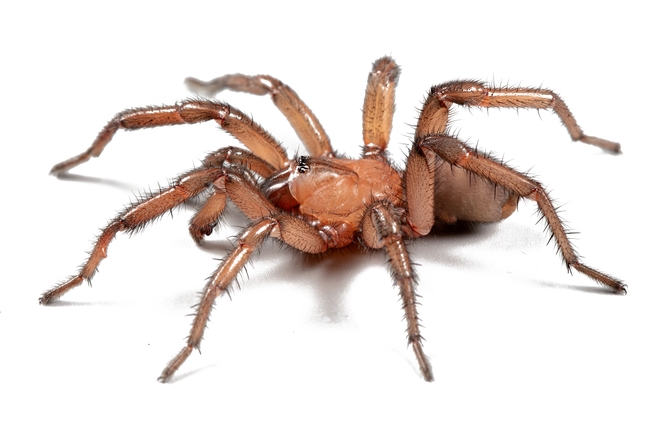
Bond wears several hats: he is the Evert and Marion Schlinger Endowed Chair, UC Davis Department of Entomology and Nematology; director of the Bohart Museum of Entomology; associate dean, UC Davis College of Agricultural and Environmental Sciences; and president-elect of the American Arachnological Society.
The Bond lab research paper, involving a new genus of California trapdoor spiders, calls attention to not only the diversity of trapdoor spiders in the state, but a new species they named for national civil rights activist Fred Toyosaburo Korematsu, a San Francisco Bay area native who resisted incarceration in the Japanese-American concentration camps during World War II.
The paper, “Microgeographic Population Structuring in a Genus of California Trapdoor Spiders and Discovery of an Enigmatic New Species (Euctenizidae: Promyrmekiaphila korematsui sp. nov.), appears in the journal Ecology and Evolution. The link: https://doi.org/10.1002/ece3.10983.


Co-Authors of Paper. Co-authors of the paper with Bond are James Starrett, project scientist; Xavier Zahnle, who recently received his doctorate; doctoral candidate Emma Jochim and doctoral student Iris Quayle.
Trapdoor spiders are so named because they construct their burrows with a corklike or wafer trap door made of soil, vegetation and silk.
“In this study, we generate sub-genomic scale data to investigate phylogenetic relationships and population structure in Promyrmekiaphila and explore deep phylogenetic breaks hypothesized to occur across the genus,” they wrote. “We employ multiple approaches to test species delimitation hypotheses and test for gene flow to assess reproductive isolation in divergent lineages. We measure an array of female somatic morphological characters to evaluate if species diverge morphologically in potential sympatry, as well as in allopatry with divergent ecological niches. Our goal is to address at what point in the speciation process morphologically conserved taxa can be declared cryptic species rather than simply divergent population groups. We describe a new speciesPromyrmekiaphila korematsuisp. nov. Ultimately, we reject dividing the most geographically widespread species,P. clathrata, into multiple species, and instead interpret genetic breaks as deeply structured populations that are not fully reproductively isolated or may have undergone historical gene flow.”
The paper's abstract:
tr“The recognition and delineation of cryptic species remains a perplexing problem in systematics, evolution, and species delimitation. Once recognized as such, cryptic species complexes provide fertile ground for studying genetic divergence within the context of phenotypic and ecological divergence (or lack thereof). Herein we document the discovery of a new cryptic species of trapdoor spider, Promyrmekiaphila korematsui sp. nov. Using subgenomic data obtained via target enrichment, we document the phylogeography of the California endemic genus Promyrmekiaphila and its constituent species, which also includes P. clathrata and P. winnemem. Based on these data we show a pattern of strong geographic structuring among populations but cannot entirely discount recent gene flow among populations that are parapatric, particularly for deeply diverged lineages within P. clathrata. The genetic data, in addition to revealing a new undescribed species, also allude to a pattern of potential phenotypic differentiation where species likely come into close contact. Alternatively, phenotypic cohesion among genetically divergent P. clathrata lineages suggests that some level of gene flow is ongoing or occurred in the recent past. Despite considerable field collection efforts over many years, additional sampling in potential zones of contact for both species and lineages is needed to completely resolve the dynamics of divergence in Promyrmekiaphila at the population–species interface.”
The research drew funding from a National Science Foundation grant and the Evert and Marion Schlinger Foundation.
Attached Images:
